In the years of working in the Audio Industry, working with numerous artists, engineers, and producers, we have realized the transformative effects an Audio Limiter can have on a mix. Today, we will talk about what an Audio Limiter does, how it does what it does, its types and application, and other things that you should consider when using Audio Limiting. This guide will help you enhance your work, whether you're new to this industry or a veteran.
An Audio Limiter is primarily used to control the dynamic range of an audio signal so that it does not exceed a preset threshold level. This process is critical for Audio Production as untamed peaks in the signal can distract the listener from the main focus point of your art.
Also, Audio Limiting allows you to prevent these peaks from causing unwanted distortion that can hamper the listening experience and even damage the audio output devices such as speakers and sub-woofers, while enhancing the overall impact of your tracks.
At the same time, preserving the natural dynamics of performance is extremely important as it adds depth and emotion to the music.
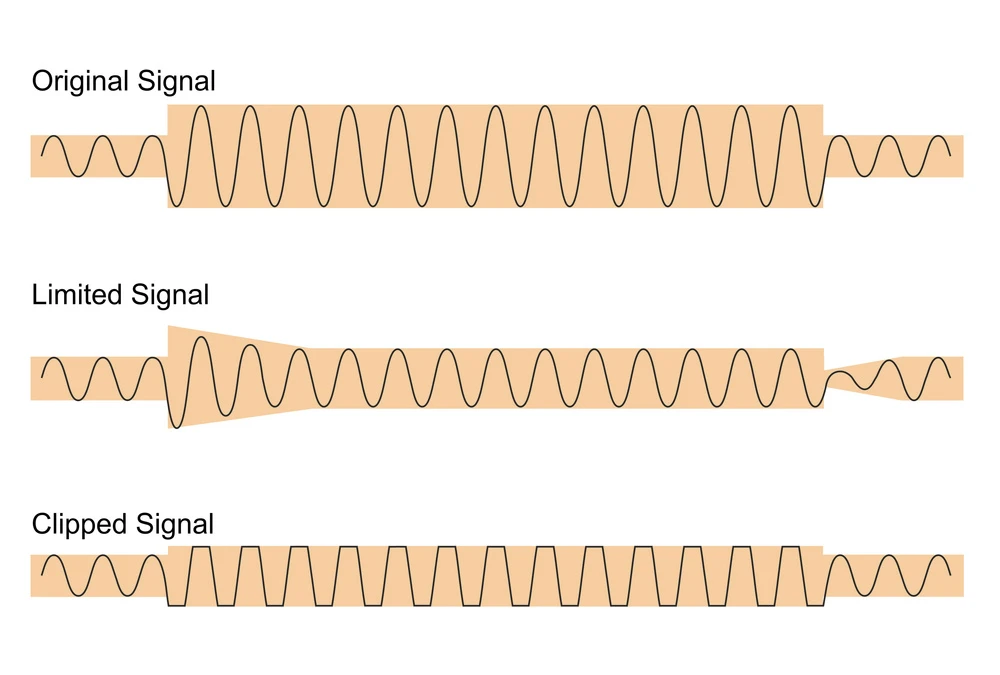
Putting it simply, an Audio Limiter will detect and then control the level of an Audio Signal simply by attenuating the peaks of the input audio waveform. Using variable gain amplifiers, compression algorithms, or a combination of both, an Audio Limiter tames the peaks within the preset threshold.
To use an Audio Limiter, you must understand the fundamental parameters of the device, which include threshold, attack time, release time, and ratio. These settings will allow users to tweak and manipulate the Audio Limiting to suit specific musical genres and their preferred requirements.
If you have worked with a compressor or even read about an Audio Compressor, you must think that an Audio Limiter is the same as a Compressor. But you must know that the difference between an Audio Limiter and a compressor lies in their handling and controlling the dynamic range of an audio signal.
An Audio Compressor controls the dynamic range of a signal by reducing the level of louder parts and increasing the level of softer parts based on the settings set by the user.
Meanwhile, an Audio Limiter’s functionality is simpler. It simply prevents the said audio signal from exceeding the preset threshold by reducing fixed and fast-acting gain.
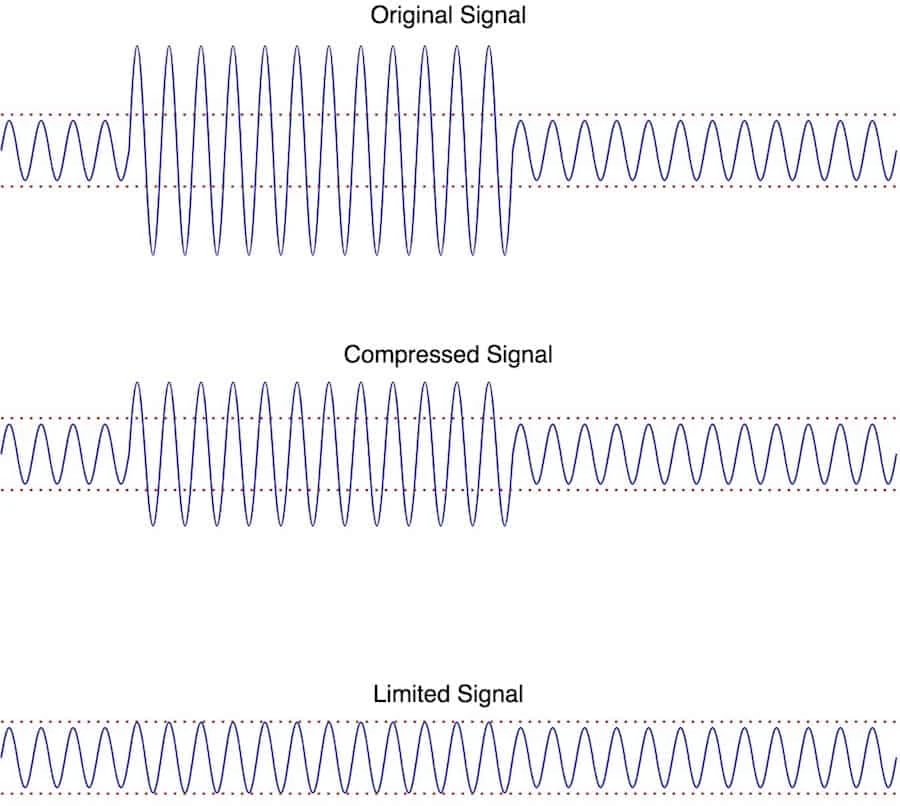
An Audio Limiter will allow you to tame excessive peaks by which you can prevent audio signals from exceeding a specific threshold so that the track's dynamic range doesn’t become too wild and works according to how you desire it to work.
If you are an Audio Professional working in the streaming business, you must know that these media platforms have set certain limits to the loudness levels to maintain consistency on their platforms for ease of audience with a uniform listening experience.
Audio Limiters are often used to enhance the perceived loudness of the audio signal to bring the overall loudness levels without distorting the dynamic range intact. Perceived loudness helps enhance certain genres like pop, electronic, EDM, and rock, where a punchy and upfront sound is desired.
Sudden and excessive is as harmful to audio equipment as to human ears. Audio Limiting can allow you to control these spikes to protect speakers, amplifiers, and other audio equipment from being damaged. Each piece of equipment has a safety limit, and by setting the threshold below the maximum level, users can prevent unwanted damage or equipment failure.
While several types of Audio Limiters are available in the market, we are mentioning some of the best ones, each of which has its own benefit.
Peak Audio Limiters are one of the most commonly used devices as they instantaneously reduce the gain of an audio signal as and when it exceeds the preset threshold.
Peak Limiters are mostly used to avoid clipping and distortion, control sudden spikes in volume and ensure that the signal remains within the desired range.
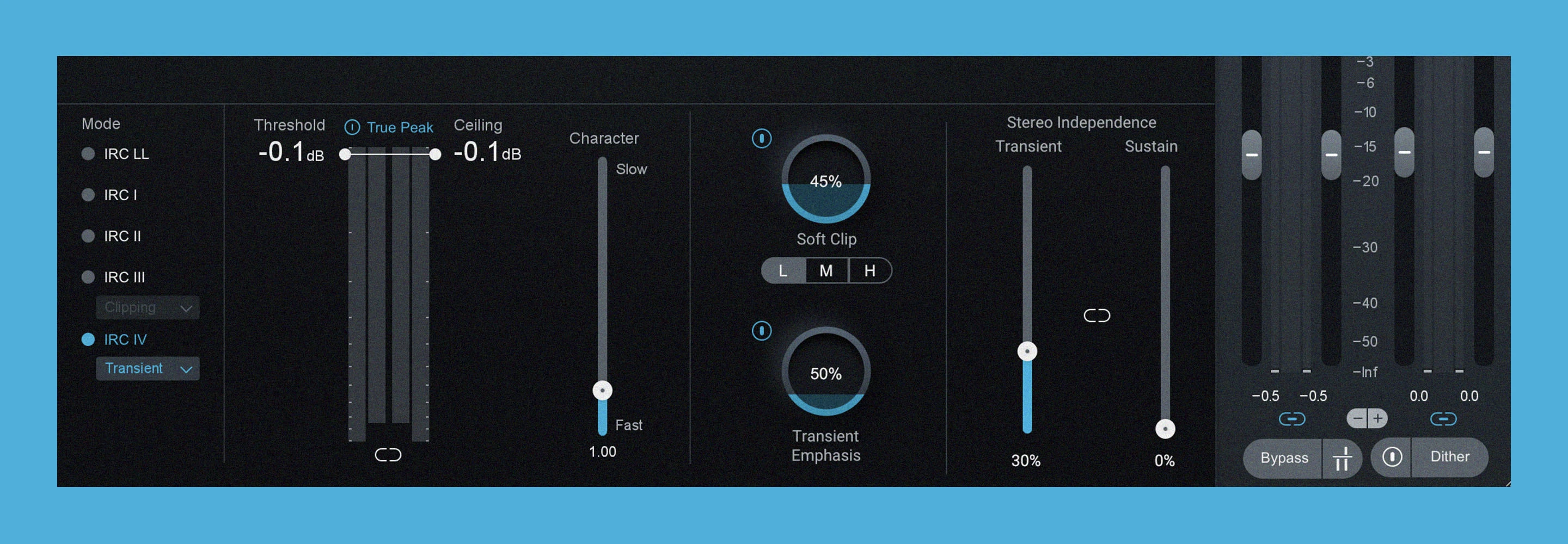
RMS stands for Root Mean Square, and as their name suggests, these Audio Limiters measure the average energy level of an audio signal over time, and then instead of reacting instantaneously like Peak Limiters, they react to the overall loudness of the audio calculated from the average.
This functionality makes RMS Limiters perfect for audio signals where you want a more balanced, smoother, natural sound and consistent loudness level.
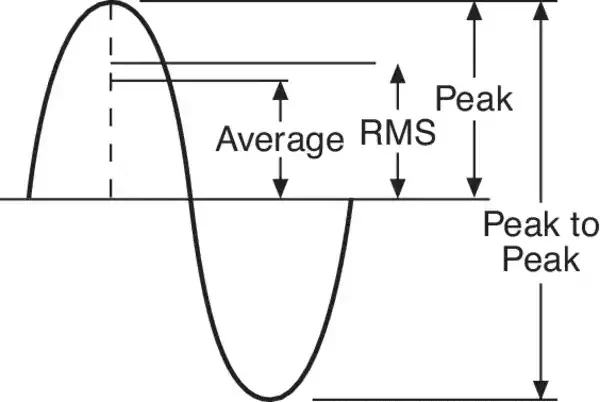
Multiband Limiters are a great choice among other Audio Limiters as they allow you independent control over different frequency bands of the same audio signal by diving them into multiple frequency ranges and then applying Audio Limiting techniques to each.
This frequency dividation allows users to have higher control over each specific frequency area, giving them a chance to have better clarity and prevent the introduction of unwanted artefacts, and have an optimal balance and loudness across the entire audio spectrum.
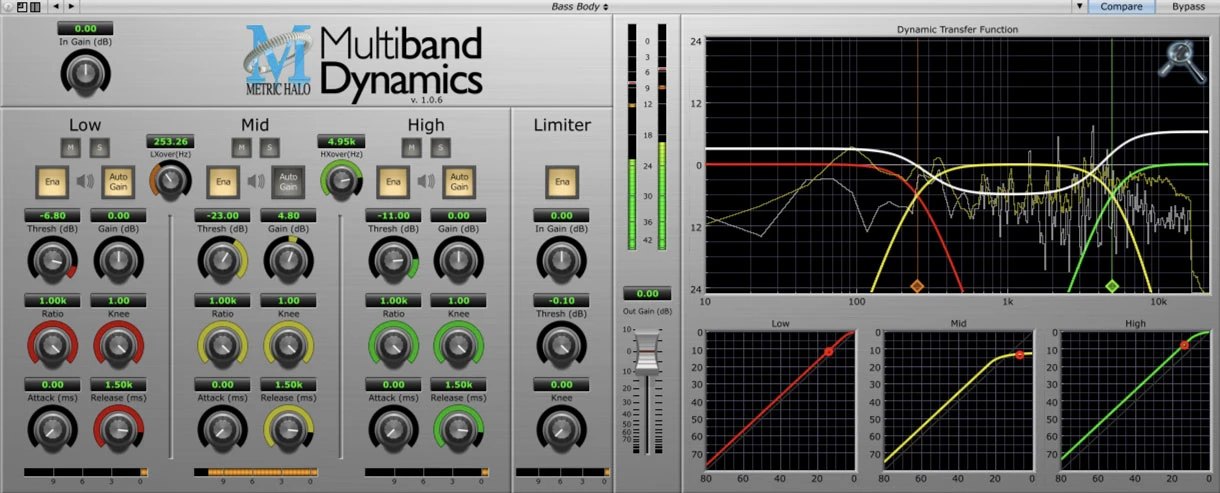
Lookahead Limiters work just the way their name tells you. This limiter will introduce a delay in the audio signal processing chain to analyze the incoming audio in advance to foresee the upcoming spikes and then provide gain reduction.
Lookahead Audio Limiters are often paired with complex audio sources with fast-transient sounds, such as drums and percussions.
Program Limiters are equipped with sophisticated algorithms that allow you to control the audio signal's dynamic range by changing the loudness levels to prevent any sudden volume changes.
This type of Audio Limiter is mostly used to ensure seamless streaming of audio signals on live platforms, avoiding manual adjustments.
Now that you have learned the basics of an Audio Limiter let us take you through setting up a limiter correctly.
Before doing anything, you should know what you set up a limiter for. You should know the kind of outcome you want from the Audio Limiter. Take into consideration the genre, style, and intended platform it is going to play on.
As mentioned in the previous section, there are several Audio Limiters to choose from, it is up to you to decide which one of them might suit your project well. Consider the characteristics, features, and the audio material you are working with.
Technically setting the threshold is the first step in setting up an Audio Limiter. Adjust the threshold levels so that you can control the maximum peak level. While doing so ensure that you do it without distorting the desired signal dynamics.
The attack time you set will determine how quickly the Audio Limiter will respond to the audio signal once it exceeds the threshold. The faster the attack time, the more immediate gain reduction will happen, and vice versa.
On the other hand, the release time will tell the limiter how quickly it has to stop working once the signal drops below the threshold level. A shorter release time can allow you a more transparent limit, and a longer release time helps preserve the audio's dynamics and natural tone.
The ratio that you set in the Audio Limiter will tell it exactly how much of gain reduction is to be applied to the audio signal once it exceeds the threshold. So, a higher ratio will provide you with a more aggressive limit and vice versa.
Always consider the dynamic range of the audio and the desired level of transparency you want to achieve while setting the ratio.
Once you adjust all the parameters of the Audio Limiter, you will have to monitor and listen to the outcome. To get a more precise sense of the sound, we recommend using peak meters, RMS meters, or LUFS meters to check the levels and dynamics of the audio.
Also, keep an ear out for any unwanted artefact, distortion, or unwanted changes that are limiting might have been introduced and tweak some changes accordingly.
From our own experience, nothing has helped us more than comparing our limiter settings with reference tracks or pre-existing material in the same genre and style when we cannot get the right results.
Making the right choice when tweaking the settings is extremely critical in any Audio Equipment, let alone an Audio Limiter. Once you have set the right settings, you are halfway through to your desired outcome.
Generally, starting with a threshold of around -10 dBFS to -6 dBFS is considered a good point. You can always go higher or lower depending on your particular style.
For fast transients and genres like pop or hip-hop, a decent point to start lies around 1 ms to 10 ms, and if you are looking for smoother transients, go for a higher attack time of around 20 ms to 50 ms.
From our experience, we can say that a good starting point for the release settings can be anywhere from 50 ms to 100 ms. If you aim for higher transparency, you can also opt for a higher release time of 200-400ms.
We always start with a ratio of around 2:1 or 4:1 for transparent limiting. Anything higher will return you with an aggressively limited sound.
Once you start getting an outcome, you will have to use metering tools like peak meters, RMS meters, or loudness meters to adjust the make-up gain to increase the lost loudness of your audio.
Based on our firsthand experience, we can tell you that there will be times when you fail to maintain clarity and introduce unwanted artefacts to the signal. To avoid this you can limit different frequency ranges separately using the Multiband Limiter, as they will allow you more control over each frequency band, offering greater flexibility and precision.
The excessive gain reduction to any audio signal will most probably squash the natural dynamics, and you will end up with a lifeless and flat sound. This is why it is important to balance control and musicality.
When using equipment like an Audio Limiter, it is important to have accurate readings if you want the right results. A great amount of help comes from visual feedback from peak meters, RMS meters, and LUFS meters as they enable you to have precise control and maintain compliance with industry standards and streaming platforms.
In the years we have spent in the industry, we have seen all kinds of people using a limiter as a quick fix for poor mix balance or low-quality recordings. You should remember that this will do nothing more but only hamper your already poor sound.
If you have any issues during the recording or mixing, you should clear them before you apply to limit in the mastering.
Many people use limiting to compensate for their lost dynamic range, but one should understand that it is important to manage the dynamic mix from the beginning of the process, and an Audio Limiter should only be used to fine-tune the peaks without compromising the overall expression.
As a sound professional, you should know where your produced sound will be played as different media formats and playback systems have varying limitations and loudness standards. Consider them to provide your listeners with the best listening experience.
In conclusion, an Audio Limiter is a powerful tool that can significantly impact the quality and impact of your audio productions. An audio limiter offers numerous benefits by controlling peaks, ensuring compliance with broadcasting platforms, adding perceived loudness, and protecting audio equipment.
♥ - Joseph SARDIN - Founder of BigSoundBank.com - About - Contact
Be the first to give an opinion!